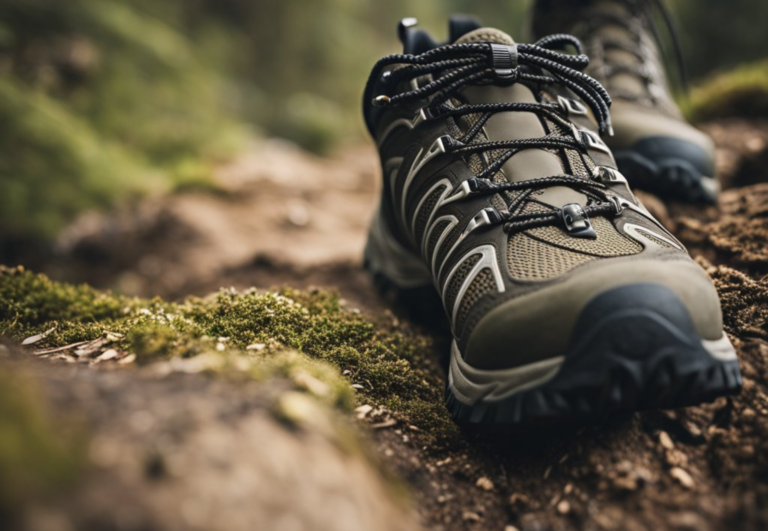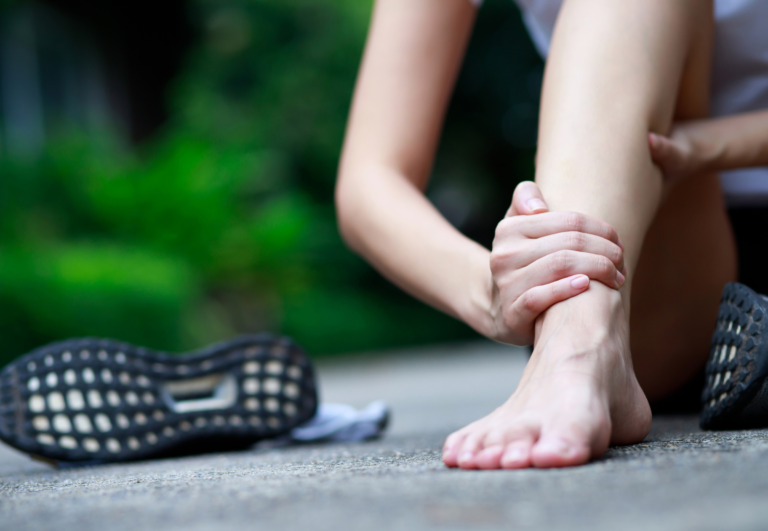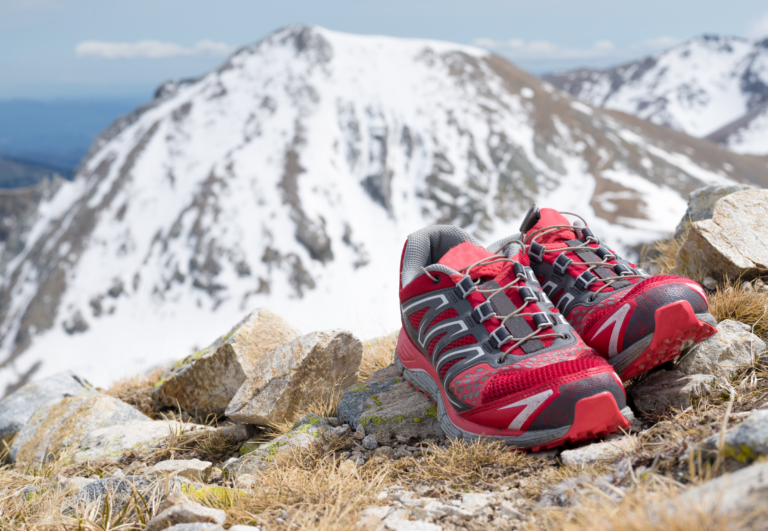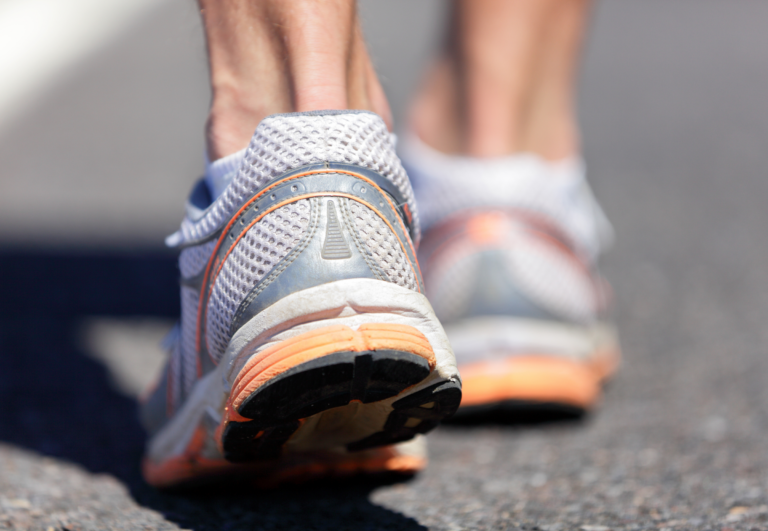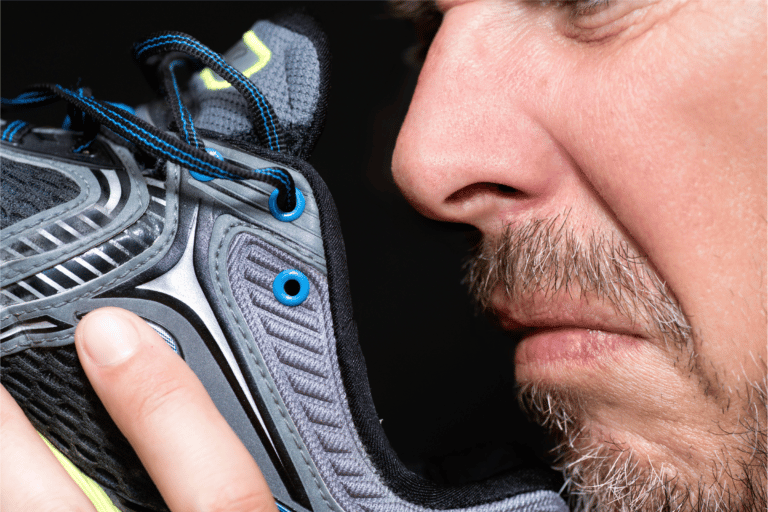How Much Toe Room You Need in Running Shoes: Finding the Perfect Fit
The toe room or toe box in running shoes is the space at the front of the shoe designed to house your toes. It should allow enough room for comfort and natural toe spread without being too tight or too loose.
The best way to tell how much toe room you need is to have about a thumb’s width of space between your longest toe and the end of the shoe. This ensures enough room for your feet to expand upon impact while running and helps prevent injuries or discomfort.
When choosing running shoes, consider the length and width of your foot, and aim for a snug fit that still allows for adequate toe movement. Proper toe room is key for a comfortable and effective running experience.
What Is Toe Room (Or The Toe Box) In Running Shoes?
The toe room, often referred to as the toe box, is the front part of your running shoes that encapsulates your toes. It’s essential for keeping your feet comfortable and preventing injury during a run. When selecting a size for your running shoes, you’ll want to pay attention to the toe box for both comfort and functionality.
The toe box should provide enough width and length to accommodate your toes without squishing them. Fit is crucial; your toes shouldn’t touch the front of the shoes, yet they shouldn’t have excessive room to slide around.
A good rule of thumb for finding the ideal toe room space —literally—is to ensure there’s about a thumb’s width of space between your longest toe and the end of the shoe. This space supports the natural expansion of your foot when it impacts the ground.
Proper toe room is defined by a balance between space and snugness. Your fit should complement your foot shape; if you have wider feet, look for shoes designed with a broader toe box to match.
Regardless of foot shape, a properly fitting toe box will enhance your comfort, allowing your toes to spread out naturally without constriction.
| Foot Width | Toe Box Consideration |
|---|---|
| Narrow | Standard or snugger fit |
| Medium | Standard fit |
| Wide | Wider fit or specialized design |
In summary, when trying on running shoes, prioritize a toe box that feels comfortable, accommodates your running shoe size, and caters to the unique shape and size of your foot, ensuring a fit that enhances your running experience.
Finding the Right Toe Room Fit
Selecting a running shoe with the correct toe room is vital for your comfort and to prevent foot issues. An ideal fit accommodates both the length and the width of your toes, ensuring stability without causing blisters.
How To Measure Toe Room In Your Running Shoes
- Length Check: There should be about a thumbnail’s width (1/2 to 1 inch) between the tip of your longest toe and the end of the shoe. This space allows your toes to spread naturally when your foot lands, preserving balance and preventing the toes from hitting the front of the shoe.
- Width Check: You should be able to freely wiggle your toes inside the shoe. If you can pinch a bit of the material along the widest part of your foot, the shoe likely provides a suitable width.
To accurately measure toe room:
- Stand on the insoles of the shoes, putting your full weight on your feet.
- Check to ensure your feet do not extend beyond the insoles at any point; this will confirm both the width and length are appropriate.
When To Size Running Shoes Up Or Down For Toe Room
Size Up a full size or half size bigger, if:
- Your toes touch the front of the shoes, potentially leading to injuries.
- The shoes feel uncomfortably tight, particularly towards the end of the day when feet naturally swell.
Size Down, if:
- You experience slipping at the heel, which suggests the shoe’s length may be too great, risking blisters.
- There’s excessive space beyond a thumb’s width at the toes, which can impair your stability and balance while running.
| Foot Condition | Suggestion |
|---|---|
| Wider feet | Consider wider sizes or specific models designed for wider feet to ensure a comfortable fit. |
| Different sized feet | Always fit your shoe to your largest foot to prevent any discomfort. |
It’s recommended to visit a shoe store to try on different sizes and get assistance from a professional. A podiatrist or shoe fit expert can assist with finding a shoe that matches both your foot size and arch length, which is crucial for optimal toe fit.
Remember to try on shoes at the end of the day to accommodate for natural swelling.
Identifying Toe Room Fit Issues
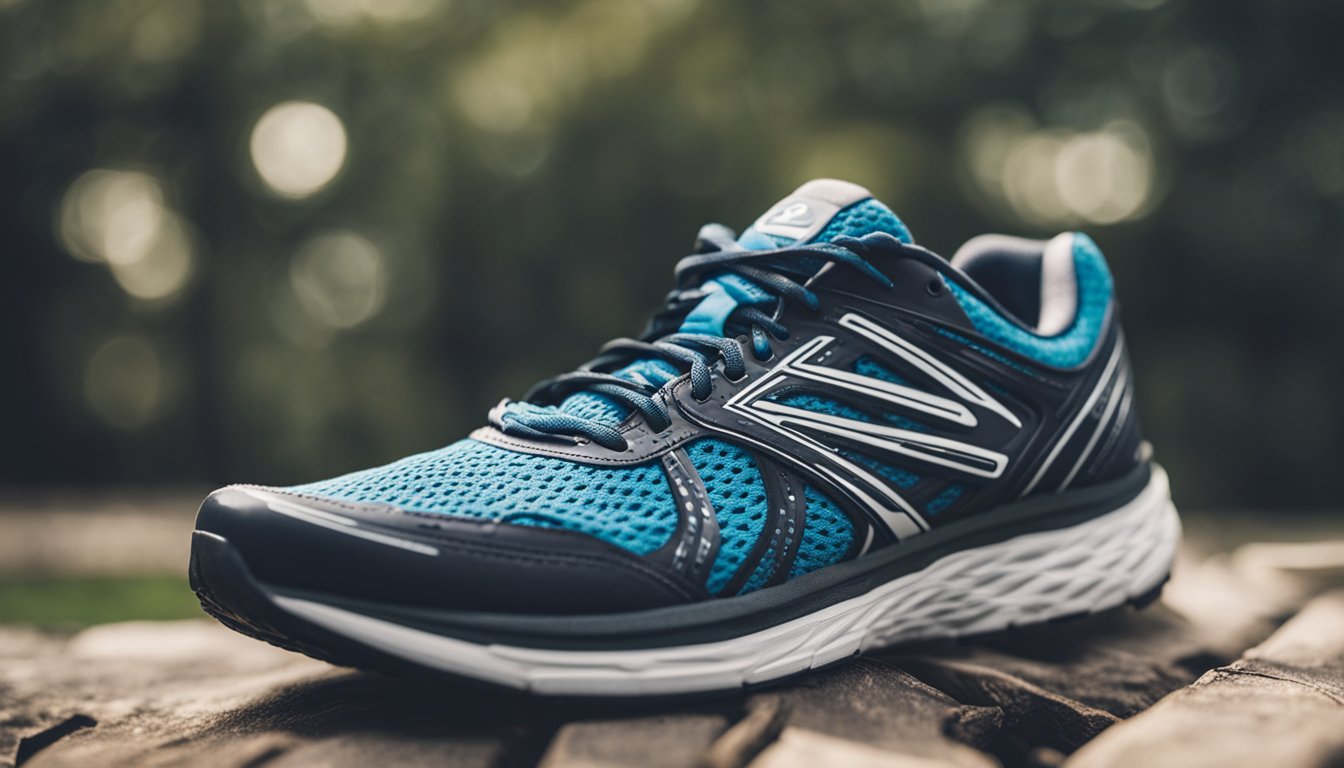
Proper toe room in your running shoes is crucial to avoid discomfort and potential injuries. Ensuring a snug yet comfortable fit will help keep your feet healthy and your runs enjoyable.
Signs That Your Running Shoes Have TOO MUCH Toe Room
- Blisters and Calluses: If your shoes are too loose, your foot may slide around, which can cause blisters or calluses due to constant friction.
- Heel Slippage: When there’s excessive space, your heel might not sit snugly, leading to an improper heel fit that can affect stability.
| Excess Toe Room Issue | How it Affects Your Run |
|---|---|
| Foot Slide | Impacts stability |
| Blisters | Results from Friction |
| Heel Fit | Can lead to slippage |
Signs That Your Running Shoes Have TOO LITTLE Toe Room
- Toenail Damage: A tight toe box can lead to bruised or black toenails as your toes constantly press against the front of the shoe.
- Pain and Discomfort: Shoes that are too narrow or short will squeeze your toes, potentially causing bunions, corns, or hammertoes.
| Insufficient Toe Room Issue | Potential Consequence |
|---|---|
| Tight Toe Box | Toenail Injury, Bunions |
| Compressed Toes | Corns, Hammertoes |
| Lack of Wiggle Room | Discomfort, Pain |
To gauge the ideal fit, you should have about a thumb’s width of space between your longest toe and the end of the shoe’s toe box. Your toes should wiggle freely without feeling cramped, ensuring both comfort and adequate room to accommodate any swelling that occurs while running.
Remember, the right amount of toe room contributes to overall foot health and a better running experience.
Maximizing Toe Room Comfort
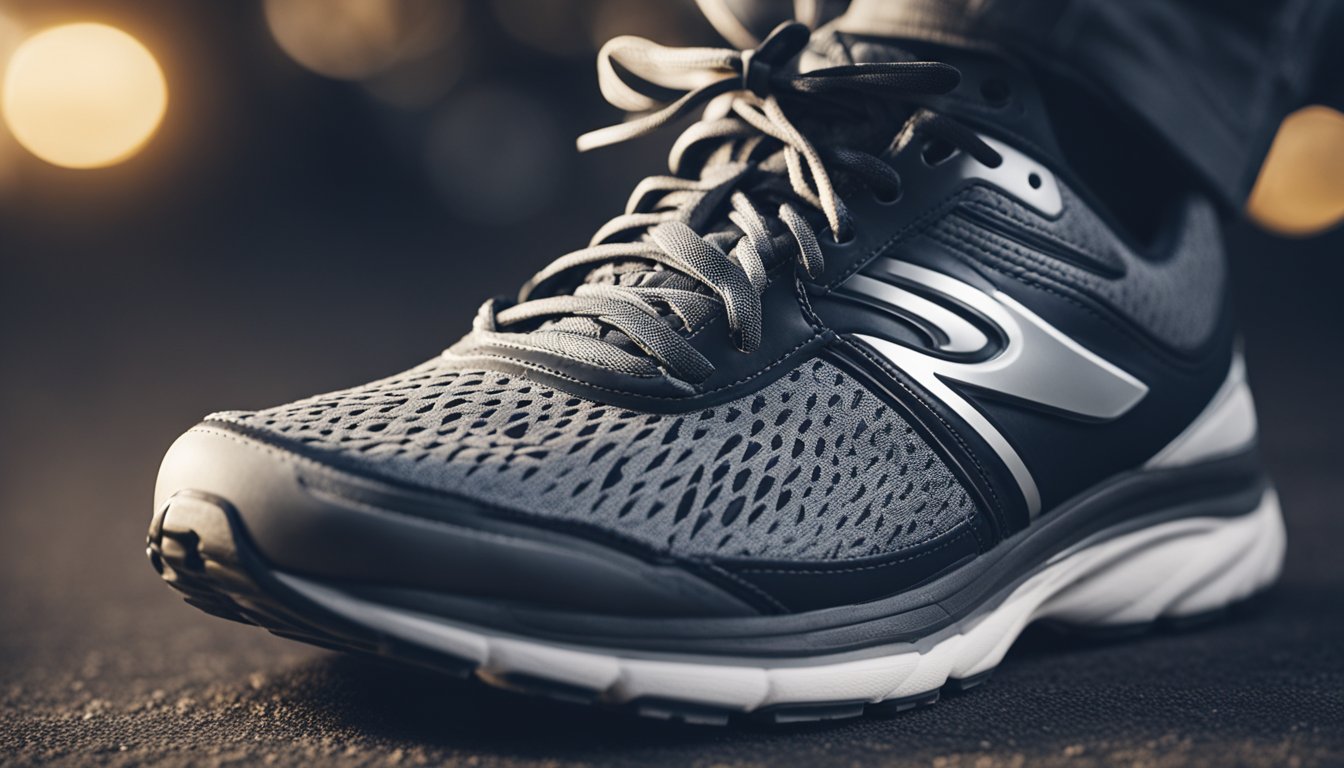
Finding the sweet spot for toe room in your running shoes is essential for a snug fit that ensures both comfort and support. A well-adjusted shoe can prevent pain and allow your feet to swell and breathe as you run.
How To Adjust Toe Room With Lacing Techniques
Some lacing techniques can change how your running shoes fit around your toes. Here’s one to try:
- Parallel Lacing Technique: This lacing method helps alleviate pressure on the top of your foot and creates more room in the toe box.
- Start by lacing your shoes at the first pair of eyelets closest to the toe, then run your laces straight up to the next eyelet on the same side.
- Cross the laces over to the opposing eyelets before running them straight up again.
- Repeat this pattern until you’ve laced all the way up.
This technique helps to keep your heels in place while giving your toes more freedom.
How Socks Affect Toe Room
Choosing the right socks is surprisingly impactful on how your running shoes fit.
- Thickness: Thicker socks provide extra cushioning but can make your shoes feel tighter.
- Material: Breathable and moisture-wicking materials help maintain blood flow and reduce the risk of rubbing and blisters.
| Sock Features | Impact on Toe Room |
|---|---|
| Thinner Materials | Increases toe space |
| Thicker Cushioning | Decreases toe space |
| Moisture-wicking | Improves comfort |
| Breathable Fabrics | Maintains healthy blood flow |
Always try on running shoes with the socks you plan to run in to ensure a good fit. Emphasize fit and comfort by choosing socks that complement the fit of your shoes, avoiding any that cause constriction or allow excessive movement.
Choosing the Best Shoe Brands And Models
When searching for your ideal running shoes, you’ll want to prioritize fit and comfort. A proper fit means there should be about a thumb’s width of space in the toe box, allowing your toes to move freely and accommodate for swelling during runs.
This space helps prevent foot problems like neuroma and black toenails, which are often signs your shoes are too snug.
To ensure you have the right size and fit, consider brands that offer wide fit models with ample toe room. Brands like New Balance, Altra, and Brooks are known for their comfortable fit, specifically for those who need additional space.
Look for shoes with flexible upper material, often made of mesh, to allow for a more adaptable fit.
| Brand | Model | Features |
|---|---|---|
| New Balance | Fresh Foam 1080 | Wide toe box, cushioning |
| Altra | Escalante | FootShape toe box, zero drop |
| Brooks | Ghost | Spacious fit, stable ride |
For those with high arches or who overpronate, brands such as ASICS and Saucony offer motion control and stability options. The right cushioning and support technologies in these models can help mitigate impact and support your individual gait characteristics.
If you have specific needs, such as flat feet or plantar fasciitis, don’t hesitate to consult a specialist or look for models approved by the American Podiatric Medical Association. They can provide guidance on shoe models that accommodate orthotics or have specialized cushioning and support.
Lastly, always remember that each brand and model may fit differently. It’s essential to try them on or consult with a brand’s sizing FAQs to ensure the best possible shoe fit.

